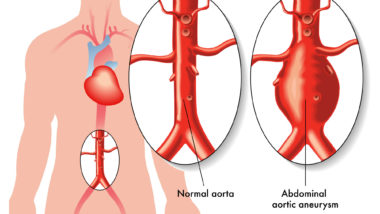Top Class Actions’s website and social media posts use affiliate links. If you make a purchase using such links, we may receive a commission, but it will not result in any additional charges to you. Please review our Affiliate Link Disclosure for more information.

These drugs are broad-spectrum antibiotics that can be effective against bacteria causing bronchitis, sinusitis, pneumonia, urinary tract infections, bone and joint infections, and infections of the skin. Today, they are most often used to treat infections of the respiratory or urinary tract. Generally, they work by manipulating bacteria DNA in such a way as to stop them from reproducing.
As a drug class, fluoroquinolones are the most widely used group of antibiotics in the United States, with over 26 million patients taking them every year. Nevertheless, they are usually given after other treatments have failed or a patient has developed resistance to other antibiotics. They are typically only recommended as a first try treatment in serious cases involving inflammation of the kidneys or prostate.
The recent FDA warning issued over fluoroquinolones is based on a number of recent studies. One such study was published in the Journal of the American Medical Association (JAMA) in November 2015. The study—based in Taiwan–found that patients taking fluoroquinolones may double or triple their risk of injury to this major artery, depending upon how long the antibiotic was taken.
Researchers looked at nearly a quarter of a million patient cases from Taiwan’s National Health Insurance Research Database involving hospitalization for aortic aneurysm, dissection, or tear and compared them to medical histories from a control group.
They found that patients who had been exposed to fluoroquinolones were roughly twice as likely to suffer aortic wall weakness, bulging, or aortic dissection than those who have not, and the longer the antibiotics are taken, the higher the risk, according to Chien-Chang Lee, chief of emergency medicine at NTUH’s Yunlin Branch.
“We found that use of fluoroquinolones was associated with an approximately 2-fold increase in risk of aortic aneurysm and dissection within 60 days of exposure,” the researchers wrote.
“Although our results cannot establish cause and effect, it is not likely that more detailed information on a larger population at relatively high-risk for aortic aneurysm and dissection will be available in the immediate future,” they added.
The researchers also noted that fluoroquinolones have been associated with collagen degradation, raising fears that they might cause more serious collagen disorders.
“Not only is tendon composed of collagen, collagen is also a major extracellular matrix component of the aortic wall,” the researchers stated. “As fluoroquinolones may induce degradation of collagen causing tendinopathy, this raises the concern that fluoroquinolones may cause or aggravate aortic aneurysm and dissection by a similar mechanism.”
These researchers warned that even though these adverse events involving fluoroquinolones are rare, “clinicians should continue to be vigilant for the appearance of aortic aneurysm and dissection in high-risk patients treated with fluoroquinolones.”
The patients whose records were studied all had fluoroquinolone prescriptions filled within the year preceding their aortic injury. Patients who had used fluoroquinolones between 60 and 365 days before the injury were almost 50 percent more likely to suffer an aortic injury. The researchers found that those patients who had “current” use of fluoroquinolones within 60 days before the injury were almost one-and-a-half times more likely to suffer injury to the major artery.
The results from JAMA study were confirmed by data from another study that appeared in the British Medical Journal (BMJ) in January 2018. That study included an analysis of patient records which found a strong correlation between the use of fluoroquinolones and an aneurysm or dissection of the primary artery that carries blood from the heart to the lower body.
Researchers in that study found fluoroquinolone patients had almost three times the risk of aneurysm.
Out of a total population of 1.7 million patients, the researchers concluded that reducing fluoroquinolone exposure could have prevented over 200 aortic injuries.
What is an Aneurysm or Dissection or the Aorta?
The aorta is one of the most significant and largest arteries in the body. It runs virtually the entire length of the chest and abdomen, starting in the heart and carrying oxygenated blood to most of the rest of the body.
An aortic aneurysm refers to a bulge in the wall of the aorta resulting from tissue weakness in that area. Aneurysms most typically occur in the abdomen or in the chest, and patients have only about a 50 percent survival rate after a rupture.
In the U.S., about 15,000 persons die every year from medical events of this nature.
An aortic dissection is a tear in the aortic tissue that allows blood to get between the layers of tissue in the vessel wall, causing those layers to separate. All aortic dissections are potentially deadly. A basic aortic dissection can endanger organs by blocking blood flow, possibly leading to stroke, paralysis, or both.
A dissection that leaks can quickly lead to life-threatening complications. Chief among these is slow fatal internal blood loss. Untreated, it can also rapidly give way, leading to the demise of the patient more quickly.
Because an aneurysm can lead to dissection, the condition is often known as “thoracic aortic aneurysm and dissection,” or TAAD. This condition usually grows slowly and presents no detectable symptoms until they have become larger and are in danger of dissection.
What Are Fluoroquinolone Medications and How Are They Used?
Medications in the fluoroquinolone class of antibiotics include the following:
- ciprofloxacin (Cipro)
- gemifloxacin (Factive)
- levofloxacin (Levaquin)
- moxifloxacin (Avelox)
- norfloxacin (Noroxin)
- ofloxacin (Floxin)
Fluoroquinolone drugs were developed from a substance known as nalidixic acid, first discovered in the early 1960s and used for the treatment of urinary tract infections. Some of these, such as Cipro, are the most commonly used antibiotics in the world.
How do Fluoroquinolones Cause Aortic Tears?
The mechanism of action by which fluoroquinolones raise the risk of aneurysm is not fully understood. Research suggests that fluoroquinolones may cause collagen to break down. This could explain the risk of tendon ruptures that have become a known side effect of fluoroquinolones, as collagen is one component of tendons.
Collagen is also found in the lining of the aorta. It’s possible that fluoroquinolones may cause an aortic tear or other injuries by degrading the collagen inside that lining.
It should be pointed out that while an association between fluoroquinolones and aortic dissection has been noted through analyses of patient records, it does not mean there is a definite causation link.
Fluoroquinolone-related aortic dissection is quite rare, and primarily affects patients with comorbidities such as hypertension or obesity or genetic diseases of the connective tissues such as Marfan Syndrome or Ehlers-Danlos Syndrome. Geriatric patients and those with a previous or family history also appear to be at risk.
Patients who do not suffer from the aforementioned risk factors are in little danger and may still benefit from fluoroquinolone treatment for specific infections.
Patients who do suffer from any of these conditions should only be prescribed fluoroquinolones as a last resort when other treatments have proven ineffective.
Are There Other Side Effects?
Other adverse effects have been noted with fluoroquinolones. First, there was the FDA warning in 2008 concerning tendinitis and tendon rupture, according to a Dec. 21, 2018 article in Forbes magazine. In the late summer of 2013—five years later—the FDA warned about the possibility of fluoroquinolones causing peripheral neuropathy in some people.
Symptoms of peripheral neuropathy are felt in the extremities and can include sensations of tingling or burning, overall weakness, changes in the way the body experiences sensations of temperature or pain or change of position.
The FDA recommends stopping fluoroquinolone use immediately if this occurs. The agency also indicated that symptoms could endure after ending the medication and continue for some time or even be permanent.
Then, before this latest warning according to Science Direct, in July 2018, the FDA warned about drops in blood sugar, effects on mental health, and neurological disorders such as insomnia, epilepsy, and psychosis. The drug oversight agency has also noted inflammation of the colon or colitis associated with the use of this class of drugs.
What is a Microbiome?
Also, according to our Forbes article, being careful with antibiotics is also critical because they can “screw up our microbiome.” What is a microbiome? It is a colony of helpful bacteria that live in your body and assist with your immune system among many things.
According to www.britannica.com, a large percentage of these microorganisms live in the gastrointestinal tract and assist with the breakdown of food. They have a symbiotic relationship with humans in that they get something for doing this work for us in return. They obtain their source of nutrients from this process as well.
In a secondary article from Science Daily, it is indicated that antibiotic treatment designed to attack pathogenic bacteria can have a long term effect on normal gut flora. The author claims that studies have demonstrated antibiotic resistant genes in gastrointestinal microbes a full week after an antibiotic run and last up to two full years.
The takeaway is that fluoroquinolones or any antibiotic should not be taken or prescribed lightly. These resistance genes can impact your subsequent ability to fight serious infection for quite some time—if not always. With science, we don’t always have the full picture, but the partial glimpse we do have in this case should be enough to discourage wanton antibiotic seeking behavior from even the most virus-fearing consumer.
Do You Qualify?
If you or someone you love has suffered from some of the most serious side effects after using fluoroquinolones including aortic bulging, tear, or dissection, you could be eligible to recover compensation for your damages. Contact us at Top Class Actions for more information.
Join a Fluoroquinolone Aortic Aneurysm, Aortic Dissection Lawsuit Investigation
If you or a loved one were prescribed Fluoroquinolones such as Cipro, Levaquin or Avelox and were later diagnosed with an aortic dissection or aortic aneurysm, you may have a legal claim. Fill out the form on this page now for a FREE case evaluation or call 1-(855)-JONES-LAW (1-855-566-3752).
ATTORNEY ADVERTISING
Top Class Actions is a Proud Member of the American Bar Association
LEGAL INFORMATION IS NOT LEGAL ADVICE
Top Class Actions Legal Statement
©2008 – 2024 Top Class Actions® LLC
Various Trademarks held by their respective owners
This website is not intended for viewing or usage by European Union citizens.
Get Help – It’s Free
Join a Fluoroquinolone Aortic Aneurysm, Aortic Dissection Lawsuit Investigation
If you qualify, an attorney will contact you to discuss the details of your potential case at no charge to you.
PLEASE NOTE: If you want to participate in this investigation, it is imperative that you reply to the law firm if they call or email you. Failing to do so may result in you not getting signed up as a client or getting you dropped as a client.
E-mail any problems with this form to:
Questions@TopClassActions.com.
Oops! We could not locate your form.













